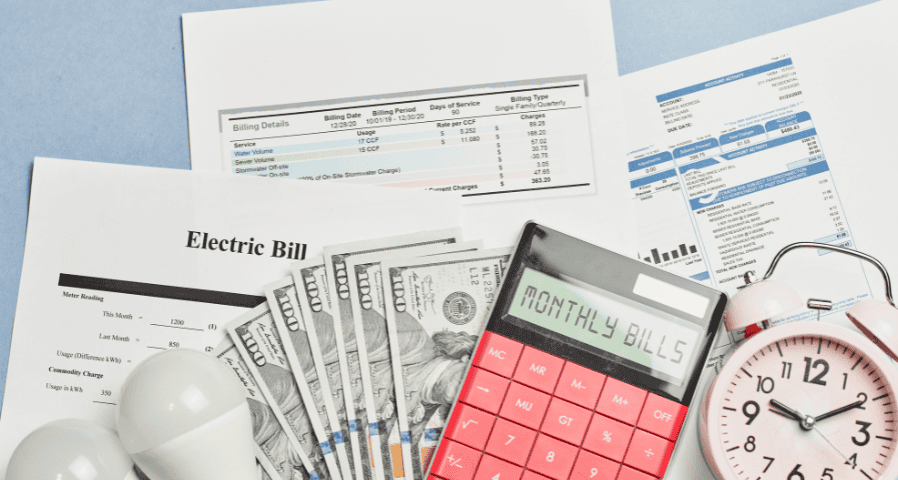Daylighting Controls & Daylight Savings: Optimizing Natural Light Through the…
Studies have shown that natural lighting has proven to improve workplaces by helping employees be more…

Commercial buildings are some of the largest consumers of energy, and with rising utility costs and sustainability goals becoming more important than ever, property managers and business owners can’t afford to ignore the habits that lead to unnecessary waste. Many of these issues come down to daily practices and overlooked inefficiencies. By identifying and correcting these energy-wasting habits, commercial buildings can improve performance, cut costs, and strengthen their environmental responsibility.
Lighting is one of the biggest culprits when it comes to wasted energy use. When lights are left on in empty rooms, it leads to higher utility bills and energy loss. Pairing LED lighting with advanced lighting controls will help curb excess energy waste. Common lighting control solutions include occupancy sensors, timers, and daylighting to turn lights off when not in use.
These strategies can be used for interior and exterior lighting needs. During office hours, office areas that aren’t frequently used can have occupancy sensors to turn lighting off when not in use. These rooms could be conference rooms or utility areas. At night, exterior lighting can use the same sensors to only turn on when motion is detected or use timers to turn on and off only when the sun is down. These strategies support both financial savings and sustainability goals.
HVAC systems represent one of the largest energy expenses in commercial buildings. Inefficiencies like uncalibrated thermostats, outdated equipment, poor insulation, and overlooked maintenance needs can cause the systems to work harder than usual. This leads to extra energy usage and a higher risk of operational failures.
Adjusting the thermostat during off-peak hours and changing it to a seasonal setting will lower excess energy use. Smart thermostats can use sensors to learn the building patterns and automatically change the settings based on the data they collect. Routine preventative maintenance checks will ensure the system is working at maximum efficiency and stop breakdowns before they occur. Together, these adjustments can dramatically improve commercial building energy efficiency.
Office equipment, building controls, and appliances all contribute to energy usage. Uncalibrated sensors, malfunctioning systems, or neglected maintenance allow waste to continue undetected. For instance, computers, printers, and copiers often remain in full power mode all day long, even when idle. Similarly, HVAC systems that are not regularly serviced can develop mechanical issues that increase energy use while reducing performance.
Reducing energy waste from equipment can be done in a variety of ways. Enabling sleep mode on equipment like computers, printers, and copiers, or implementing smart power strips to run electronics off during downtime. Enforcing a preventative maintenance plan will lower energy usage and prolong the life of your systems.
While breaking bad habits is a strong first step, long-term success depends on a structured approach to energy efficiency. Here are several strategies that deliver measurable savings and better building performance:
Together, these strategies empower commercial property managers to not only reduce energy waste in commercial buildings but also to create a culture of efficiency that pays dividends in cost savings and sustainability.
Energy-wasting habits in commercial buildings inflate utility bills, reduce asset value, increase operational expenses, and contribute to greenhouse gas emissions. This can make a property less attractive to potential tenants and buyers while undermining environmental commitments. When equipment is working extra hard or overused, it will lower its lifespan and create additional wear and tear, resulting in further maintenance costs and operational inefficiencies. On the other hand, prioritizing energy efficiency leads to better occupant comfort, improved productivity, and stronger sustainability performance.
Addressing these habits requires a proactive, long-term approach. Property managers can start by implementing energy audits, retrofits, smart technology, and employee training programs to create a well-rounded efficiency plan. Using building analytics software for real-time performance tracking can further optimize results by offering predictive maintenance and data-driven insights.
By taking these steps, businesses can transition from wasteful habits to efficient practices that save money, reduce environmental impact, and improve building performance. Action Services Group can assist in minimizing energy consumption through LED retrofit solutions and electrical maintenance services. To learn more, call 610-558-9773, email [email protected], or schedule a call by clicking the button below.